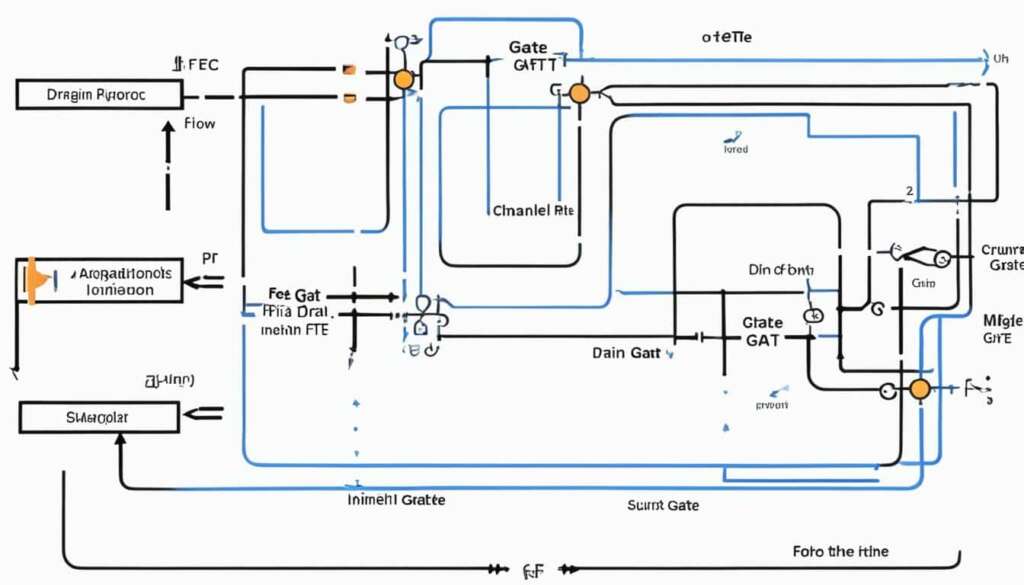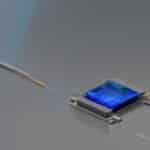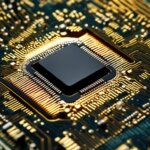Table of Contents
If you’re new to electronics, you may have heard of FET, but have no idea what it is or what it does. In simple terms, FET stands for field-effect transistor, and it is a type of transistor that relies on an electric field to control the flow of current.
In this basic guide, we will explore the fundamentals of FETs, including their basic principles and different applications. We will also look at some of the key differences between FETs and other types of transistors, and why they are an essential component in modern electronics and technology.
Key Takeaways:
- FET stands for field-effect transistor and is used to control the flow of current through an electronic device.
- There are different types of FETs, including MOSFETs and JFETs, each with its own unique applications and properties.
- FETs are commonly used in electronic devices such as computers, televisions, and smartphones, as well as in telecommunications, amplification, and switching.
- Understanding FETs is essential for anyone looking to work with electronic devices or pursue a career in electronics engineering.
- As technology continues to evolve, FETs are likely to play an increasingly important role in shaping our digital lives.
Exploring FET Basics
In this section, we will explore the fundamentals of FETs. These transistors are unique in their operation, and by understanding how they work, you can appreciate their benefits over other types of transistors.
How FETs Work
FETs function differently from bipolar junction transistors (BJTs). In BJTs, a current flows through the junction between the emitter and collector regions, amplifying the signal. In contrast, FETs control the flow of current from the source to the drain by modulating the voltage applied to the gate. When voltage is applied to the gate, an electric field is created and allows electron flow. Therefore, FETs are also known as voltage-controlled transistors.
The three terminals of an FET are the source, drain, and gate. The Source is the starting point for the electrons flow. The Drain is where the electrons finish their journey. The voltage applied to the Gate determines whether there is an electric field that allows electrons to flow from the source to the drain.
Types of FETs
There are two main types of FETs: junction FETs (JFETs) and metal-oxide-semiconductor FETs (MOSFETs), which are further classified into enhancement-mode and depletion-mode FETs. JFETs have a channel made of p-type or n-type semiconductor material, while MOSFETs have a gate of metal-oxide-semiconductor material (usually SiO2) that separates the gate electrode from the semiconductor channel. MOSFETs are the most widely used of all three stated variants, and are often used in high-power applications.
Key Characteristics of FETs
FETs have some unique characteristics that distinguish them from other types of transistors. The two principal characteristics are: the low input current of FETs, which results in high input impedance and low power consumption; and the high output resistance that results in high gain at high frequencies. Additionally, FETs exhibit a negative temperature coefficient, meaning that as temperature increases, the current decreases.
Overall, understanding FET basics is important to explore their applications in the modern world of electronics and technology. They have become an indispensable part of many industrial and commercial applications due to their vast potential and unique benefits.
Understanding FET Applications
Field-effect transistors (FETs) are widely used in a variety of applications and industries. Some of the most common FET applications in electronics include:
| Industry | Usage |
|---|---|
| Electronics | Signal amplification, low-noise amplifiers, voltage-controlled oscillators, and analogue switches |
| Telecommunications | RF amplifiers, mixers, and attenuators, among others |
| Switching | Power electronics, motor control, lighting, and automotive electronics |
One of the most significant advantages of FETs is their low power consumption, which makes them suitable for use in battery-powered devices, such as mobile phones and laptops. Moreover, FETs are more reliable than other types of transistors and have a longer lifespan, making them perfect for numerous applications that require an extended operational life.
“FETs are widely used in a variety of applications and industries because of their low power consumption, high reliability, and long lifespan”
In addition to electronics and telecommunications, FETs are also used in other specialized fields, such as military and aerospace applications, where their low power requirements and high reliability make them ideal. FETs can withstand harsh environmental conditions, such as high temperatures and radiation, making them suitable for use in satellites and other spacecraft.
Overall, FETs are essential components in modern technology and play a crucial role in enabling various applications across a wide range of industries.
Conclusion
Throughout this article, we have explored the basics of FET (field-effect transistor) and its various applications. FETs are an integral part of modern technology, and understanding their principles is crucial to developing new and innovative devices.
As we have seen in section 3, FETs find their usage in a wide range of fields, from electronics to telecommunications, and have applications in amplification, switching, and other industry-specific use cases.
Overall, FETs provide a high level of performance and efficiency, making them a popular choice for many applications. However, like any technology, FET’s development is ongoing, and we can expect future advancements in this field.
In conclusion, having a good understanding of the basics of FETs is essential for anyone involved in the design, development, and implementation of modern electronic devices. We hope that this article has provided insight into the world of FETs and their importance in the world of technology.
FET summary: FETs are a type of transistor that finds its usage in a wide range of applications, from electronics to telecommunications. Understanding the basics of FETs is vital for anyone involved in the design, development, and implementation of modern electronic devices.
FAQ
What is a FET (field-effect transistor)?
A FET, or field-effect transistor, is a type of transistor that uses an electric field to control the flow of current. It is a three-terminal device that is widely used in electronic circuits for various applications.
How does a FET work?
A FET works by controlling the flow of current through a semiconductor channel, which is created using materials such as silicon or gallium arsenide. The flow of current is controlled by the electric field generated by the voltage applied to the gate terminal of the transistor.
What are the different types of FETs?
There are several types of FETs, including MOSFET (Metal-Oxide-Semiconductor Field-Effect Transistor), JFET (Junction Field-Effect Transistor), and HEMT (High Electron Mobility Transistor), each with its own unique characteristics and applications.
What are the key characteristics of FETs?
FETs possess certain key characteristics such as high input impedance, low power consumption, high voltage gain, fast switching speeds, and excellent linearity. These characteristics make FETs suitable for a wide range of applications in electronics and telecommunications.
What are some common applications of FETs?
FETs are used in various applications, including amplifiers, switches, voltage regulators, oscillators, and audio and video signal processing. They are also widely used in computer chips, mobile devices, telecommunication networks, and other electronic systems.
Why is it important to understand FETs?
Understanding FETs is crucial in the context of modern technology as they play a vital role in numerous electronic devices and systems. Knowledge of FETs enables engineers and technicians to design and develop efficient circuits for different applications.
What are the future developments in the field of FETs?
The field of FETs is constantly evolving, with ongoing research focused on improving their performance and exploring new materials and design techniques. Some potential future developments include the use of nanoscale transistors, integration of FETs with other technologies, and advancements in power efficiency and speed.













